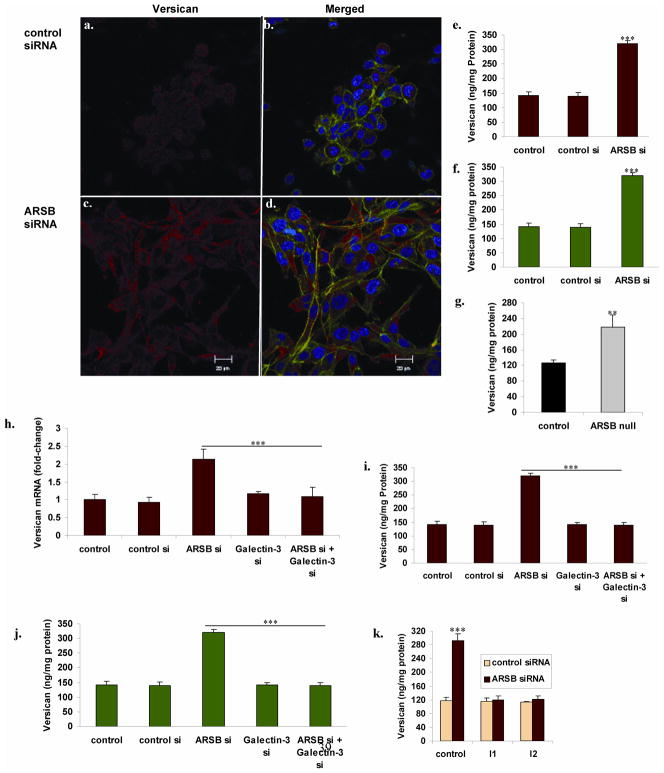FIGURE 4. Versican is increased by ARSB silencing, and this increase is inhibited by galectin-3 silencing and by AP-1 inhibitors.
Panels A,B,C,D. Prostate stromal cells were grown in transwells, and cells were stained following treatment with control siRNA or ARSB siRNA. Versican was immunostained with mouse monoclonal antibody and goat anti-mouse Alexa Fluor 594 (Invitrogen), and visualized. Versican immunostaining is faint in the control prostate cells (A), but intense red staining is present following ARSB silencing (B). Merged images with staining for β-actin (green) and DNA (blue) demonstrate prominent versican immunostaining. IgG control showed no red staining (not shown).
Panel E. Consistent with the images above, versican protein increased from baseline of 121.0 ± 5.0 ng/mg protein to 287.5 ± 20.7 ng/mg protein in the prostate stromal cells when ARSB was silenced (p<0.001).
Panel F. Similarly, in the prostate epithelial cells, versican increased from baseline of 141.6 ± 12.1 to 319.1 ± 11.9 ng/mg protein when ARSB was silenced (p<0.001).
Panel G. In the ARSB deficient mice, the prostate versican protein was 217.1 ± 32.2 ng/mg protein, significantly more than in the control mouse prostate (125.9 ± 7.3 ng/mg protein; p<0.01, unpaired t-test, two-tailed).
Panel H. When ARSB was silenced in the prostate stromal cells, versican mRNA expression increased more than two-fold (p<0.001). This increase was completely inhibited when galectin-3 was also silenced.
Panels I, J. The combination of galectin-3 silencing and ARSB silencing nullified the increase in ARSB protein that followed ARSB silencing in the prostate stromal and epithelial cells (p<0.001). These findings demonstrate that the increased expression of versican following ARSB silencing requires galectin-3.
Panel K. When prostate stromal cells were exposed to inhibitors of AP-1, identified as I1 and I2, the ARSB-knockdown induced increase in versican was reversed (p<0.001). I1 is a c-Jun mimetic peptide that impairs binding of JNK to c-Jun. I2 is an oligonucleotide-binding inhibitor that competes with c-Fos for the AP-1 oligonucleotide binding site. he inhibitors I1 and I2 inhibited the ARSB-knockdown induced increase in versican protein in the prostate stromal cells (p<0.001).

